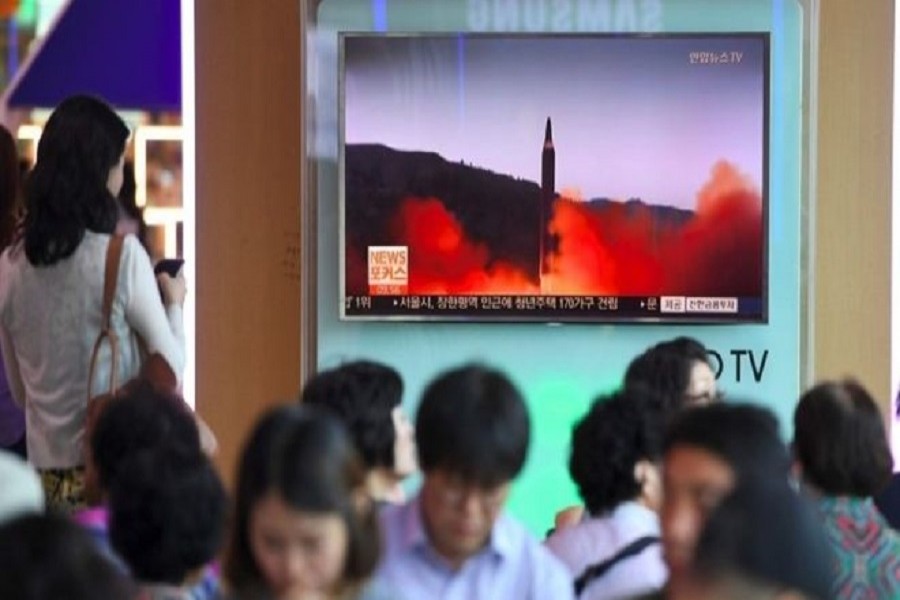North Korea has fired a ballistic missile across Japan, its second such provocative move in weeks.
South Korea's military says the missile reached an estimated altitude of about 770km (478 miles) and travelled 3,700km before landing in the sea off Hokkaido.
Japan's PM Shinzo Abe said Japan would "never tolerate" North Korea's dangerous actions.
"If North Korea continues to walk down this path, it has no bright future," he said in a statement.
US Secretary of State Rex Tillerson also condemned the launch, but put the burden of response on China and Russia, nuclear-armed North Korea's main economic partners.
"China supplies North Korea with most of its oil. Russia is the largest employer of North Korean forced labour," he said.
"China and Russia must indicate their intolerance for these reckless missile launches by taking direct actions of their own."
GUAM 'WITHIN RANGE OF ROCKET'
The South Korean military said the latest launch took place from Sunan, the district where Pyongyang's international airport is located, just before 07:00 local time (22:00 GMT on Thursday).
The US and Japan said it was likely an intermediate range intercontinental ballistic missile (ICBM).
According to the initial estimates, it flew considerably higher and further than the missile fired on 29 August.
Japan had called that launch an "unprecedented" threat, while Pyongyang warned it was only "the first step" in its military operations in the Pacific.
The US Pacific territory of Guam, which North Korea claims to have plans to fire missiles towards, is 3,400km from Pyongyang, so would be within range of the latest missile.
As with the last launch, the rocket flew over Japan's northern Hokkaido island before splashing down in the Pacific Ocean.
People were warned to take cover as raid sirens sounded.
In South Korea, President Moon Jae-in held an emergency National Security Council, while the military conducted its own ballistic missile drill in the Japan Sea, known as the East Sea, Yonhap news agency reports.
The UN Security Council will meet on Friday in New York at the request of Japan and the US.
North Korea, which insists it needs a nuclear and weapons programme to protect itself from invasion, has repeatedly conducted missiles launches in recent months, disregarding UN sanctions.
It also conducted its sixth nuclear test two weeks ago, which it claimed was a hydrogen bomb, the most powerful weapon ever made.
Fresh UN sanctions were imposed in response targeting the few remaining international trade links North Korea has.
But these appear to have done nothing to stop North Korea's weapons development, nor its fiery warnings.
On Thursday, it threatened to "sink Japan and turn America to ashes".
HOW WOULD WAR WITH NORTH KOREA UNFOLD?
# North Korea has been working on its missile programme for decades, with weapons based on the Soviet-developed Scud
# It has conducted short- and medium-range tests on many occasions, sometimes to mark domestic events or at times of regional tension
# In recent months the pace of testing has increased; experts say North Korea appears to be making significant advances towards its goal of building a reliable long-range nuclear-capable weapon
# In July, North Korea launched two missiles which it said were Inter-Continental Ballistic Missiles (ICBMs) capable of hitting the US; experts believe they put parts of the US in range
# On 3 September, North Korea said it tested a hydrogen bomb that could be miniaturised and loaded on a long-range missile


